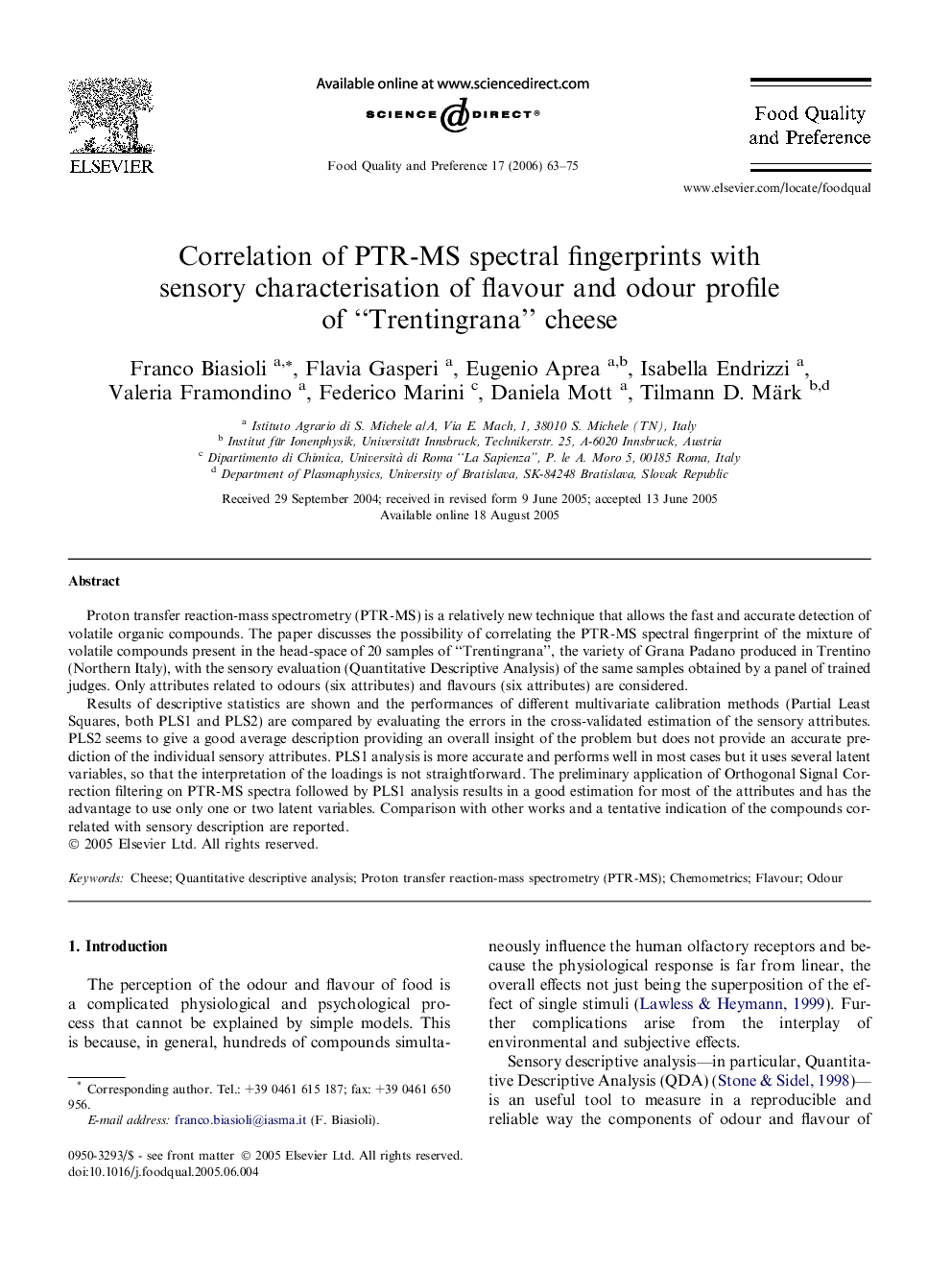| Article ID | Journal | Published Year | Pages | File Type |
|---|---|---|---|---|
| 4318347 | Food Quality and Preference | 2006 | 13 Pages |
Proton transfer reaction-mass spectrometry (PTR-MS) is a relatively new technique that allows the fast and accurate detection of volatile organic compounds. The paper discusses the possibility of correlating the PTR-MS spectral fingerprint of the mixture of volatile compounds present in the head-space of 20 samples of “Trentingrana”, the variety of Grana Padano produced in Trentino (Northern Italy), with the sensory evaluation (Quantitative Descriptive Analysis) of the same samples obtained by a panel of trained judges. Only attributes related to odours (six attributes) and flavours (six attributes) are considered.Results of descriptive statistics are shown and the performances of different multivariate calibration methods (Partial Least Squares, both PLS1 and PLS2) are compared by evaluating the errors in the cross-validated estimation of the sensory attributes. PLS2 seems to give a good average description providing an overall insight of the problem but does not provide an accurate prediction of the individual sensory attributes. PLS1 analysis is more accurate and performs well in most cases but it uses several latent variables, so that the interpretation of the loadings is not straightforward. The preliminary application of Orthogonal Signal Correction filtering on PTR-MS spectra followed by PLS1 analysis results in a good estimation for most of the attributes and has the advantage to use only one or two latent variables. Comparison with other works and a tentative indication of the compounds correlated with sensory description are reported.
